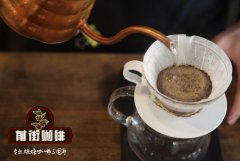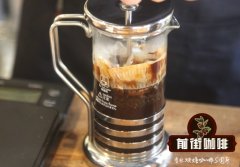How to make coffee in a siphon pot? What is the working principle of siphon pot? How's the siphon pot?

Professional coffee knowledge exchange More coffee bean information Please pay attention to coffee workshop (Weixin Official Accounts cafe_style)
Hand brewed coffee is filtered, and siphon coffee is the infusion method and filtration method to be integrated, in fact, more prominent flavor, but now popular "fine coffee" more hand-brewed coffee with filtration method.
History of Siphon Pot
In 1827, Professor Norrenberg of Tübingen, Germany, drew a sketch of a coffee machine, which was the first known siphon coffee pot in the world. Since then, in the 1830s, there have been occasional patent applications for siphon pots in Germany and France. Most of the applicants were women, the most notable of which was the design proposed by Madame Vassier of Lyon in 1841. It consists of two spheres assembled together, the lower sphere with a valve for dispensing coffee, and the upper sphere with a hollowed-out metal crown at the top. This design is more than 170 years old, but you have to be surprised that modern siphon pots are not much different from it. Siphon pot is an innovative coffee brewing method, it is also the first use of glass material coffee brewing appliances. As glass became more and more popular in Europe, the trend of designing coffee pots with glass continued throughout the 19th century.
Working principle of siphon pot
Siphon pots and pressure pots are composed of two layers of containers connected vertically or horizontally, and the pipes connecting the containers are equipped with filtering devices (usually filter cloths) at the end. The first layer of containers is placed on the heat source and filled with water; the second layer of containers contains coffee powder. The vapor pressure in the first container increases with the temperature of the water, pushing it through the pipes into the second layer, where it mixes with the coffee grounds. As soon as the heat source is cut off, the vapor pressure in the first container drops, pulling the brewed coffee back and isolating the coffee powder. Air pressure pots, on the other hand, have a lid at the spout, which when removed causes the device to pressurize and seal, allowing the coffee to seep into the lower container by gravity alone. An important aspect of this method of brewing is that without boiling the water, the steam pressure generated by the hot water is sufficient to push itself from one container to another. In fact, due to the tightness of the equipment itself, from the point of view of physical laws, the water inside can almost never boil. That's a good thing.
The Vacuum Coffee Pot is a very old but increasingly popular and entertaining way of brewing, but it is also confusing in many ways and causes a lot of frustration, and it even ends up being stuffed back into the cabinet or turned into an ornament on the display shelf.
Siphon coffee pots first appeared in Germany in the 1830s, patented by a French woman, Jeanne Richard, in 1838. The design of today's siphon pot is not far from the previous phase, divided into two parts, the upper seat and the lower seat, the lower seat is filled with water, at the same time directly heated to boiling; the upper seat is filled with coffee powder, will be inserted in the lower pot above, the two are very close, in order to allow the steam in the lower seat to accumulate enough pressure, hot water through the glass tube to push up to the upper seat, to the upper seat water temperature will drop below the boiling point, the temperature is just right for brewing coffee. When the hot water and coffee in the upper seat are soaked for a while, it is important that the lower seat be heated continuously.
To finish brewing, remove the heat source from the base of the siphon pot. When the steam cools, it condenses back to liquid water, forming a vacuum-like state, sucking the coffee liquid from the upper seat back to the lower seat through the filter and glass tube. The coffee grounds will remain at the top of the table. Separated from the coffee. Coffee can be poured directly from the bottom seat, and the whole brewing process is a fascinating physical phenomenon. When doing experiments in the classroom, practice with a siphon pot and usually get a good response. Unfortunately, siphoning pot brewing is so difficult that most people can't do it correctly, and often give up after two tries, which is really a pity.
END
Important Notice :
前街咖啡 FrontStreet Coffee has moved to new addredd:
FrontStreet Coffee Address: 315,Donghua East Road,GuangZhou
Tel:020 38364473
- Prev

What is the reason for choosing coffee? What is coffee with ears? The correct way to drink coffee
Professional coffee knowledge exchange More coffee bean information Please pay attention to the invention of ear-hanging bags in coffee workshop (Weixin Official Accounts cafe_style) In China, it is not difficult to obtain ear-hanging bags (also known as filter-hanging coffee). They are sold in major e-commerce, online stores and some self-baked coffee shops. It is also very easy to brew ear-hanging bags by yourself. But do you know which country first invented ear bags?
- Next

What is the French pressure? How to use a pressure pot to make coffee? The usage of the pressure kettle
Professional coffee knowledge exchange more coffee bean information Please follow the coffee workshop (Wechat official account cafe_style) in addition to the use of pressure-made espresso, pressure-free coffee extraction methods are roughly divided into two categories: complete soaking or filtration. Filter cup brewing and chemex belong to the technology of filtering coffee brewing, which separates most of the cellulose and soluble matter in coffee beans.
Related
- What is the Philharmonic pressure? How to use Philharmonic pressure to make delicious coffee
- Why does a hand grinder have more fine powder than an electric grinder?
- In addition to the hot mom, what is the difference between the versions of EK43 | ditting and Mahdi ek43?
- What kind of equipment do you need to make coffee by hand? Introduction to novice starter cooking equipment tools
- Espresso needs to be ground how thick and thin scale entry Italian Coffee Machine Bean Grinder investigation and Grinding course
- How much does it cost to open a small private cafe? How much does it cost to learn coffee? How to operate it?
- The difference between the flavor characteristics of hand-brewed coffee and coffee maker is hand-brewed coffee really better than coffee maker? Can I use a coffee machine to make coffee beans by hand?
- The difference between 01 and 02 of hario v60 filter cup what is the difference between 01 and 02 filter cup opening and cooking flavor
- What's the difference between the smart cup and the French kettle? Which is better, the French kettle or the Smart Cup?
- What's the difference between a smart cup and a V60 filter cup? The difference between the taste of smart cup and hand-brewed coffee

